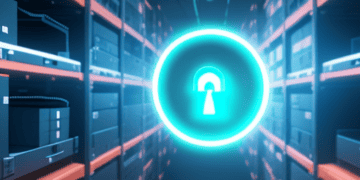In the rapidly changing landscape of supply chain management, the role of Chief Information Security Officers (CISOs) has become increasingly pivotal. As outlined by Nate Warfield, Director of Threat Research and Intelligence at Eclypsium, in a recent interview with Help Net Security, CISOs are at the forefront of protecting supply chains and ensuring comprehensive visibility across the organization.
The primary responsibility of CISOs, as Warfield emphasizes, is the thorough identification of all technological components within a company’s environment. This includes everything from data centers to everyday devices such as phones and security systems. The task becomes more complex in larger organizations with legacy technologies, diverse devices from acquisitions, and a variety of employee-owned devices (BYOD).
Each of these elements has its own supply chain, varying by vendor and device model. These supply chains are generally divided into two categories: hardware and software. The software supply chain, especially with open-source components, is relatively more mature and traceable. The Software Bill of Materials (SBOM) concept aids in this process. However, challenges arise with closed-source solutions, which often integrate open-source elements, making them less visible during audits.
The process of technology component identification is ongoing and particularly critical during mergers and acquisitions, where new technologies and associated risks are integrated almost overnight. An organization’s ability to rapidly determine the impact of vulnerabilities is crucial. Ideally, this should be within hours, as delays can significantly increase the risk, especially given the speed at which attackers exploit vulnerabilities.
The hardware supply chain presents a higher level of complexity. Vendors may not always disclose details about their operating systems, the open-source software utilized, the origins of their hardware components, or the firmware that operates both the device and its subcomponents. This complexity necessitates a detailed understanding of an organization’s entire technology stack.
Warfield also highlights the often-seen disconnect between security and development teams in managing software supply chain security. To overcome this, he recommends a collaborative approach where security teams are involved early in the development process. Regular security reviews and a shared understanding of roles can prevent last-minute delays and improve overall security posture.
With new global cybersecurity regulations and standards emerging, CISOs face the challenge of adapting their supply chain security strategies accordingly. This adaptation requires a cross-functional effort involving executive, development, security, and legal teams. The strategy will inevitably vary based on the organization’s business model and the specific regulatory environment it operates in.
In the context of rapid digital service adoption, Warfield advises that supply chain security should be an integral part of the early development stages. Regular audits of open-source libraries and components for known vulnerabilities, along with maintaining a manifest of all third-party components, are essential practices. While vulnerabilities are inevitable, a robust understanding of all dependencies positions an organization to respond effectively to new threats.
Lastly, the article touches on the growing role of AI and machine learning in cybersecurity. While the full implications for supply chain security are still unfolding, it is clear that these technologies will play a significant role in vulnerability research. Organizations are encouraged to plan for the integration of AI and ML into their development and security strategies.

















